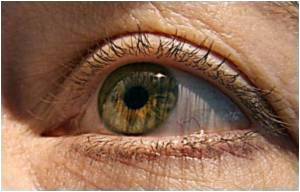
Even if two people trace the same paths, the exact way they move their eyes differs.
This is what Oleg Komogortsev, a computer scientist at Texas State University-San Marco, is trying to use in his new system.
"We are seeing there are enough differences so we can talk about this as a biometric," Komogortsev told TechNewsDaily.
A biometric is a measurement of something on the body - fingerprints, for instance - used to identify people. Computer scientists all over the world are studying biometrics for crime solving, for border security, and just as a high-tech way to sign into smartphones, tablets and other devices.
Komogortsev's research is in its earliest stages and needs years of work before it might show up at airports, high-security workplaces or even home computers. However, he thinks eye movements could be part of the next generation of a more established biometric, iris scans, which are already used in some airports and private companies, and in a countrywide ID effort in India.
Advertisement
"The strength of our method is it can work together with iris [scanning]," he said.
Advertisement
Komogortsev's system considers both the exact path that people's gazes take and the fixations and saccades they make along the way.
From those movements, the system calculates unique properties about people's eyes, including the force their eye muscles use and other properties about the fat and flesh around the eye and the eyeball itself, Komogortsev explained.
Further in the future, eye-movement scans could also help security officials determine if someone is ill or emotionally distressed, conditions that can affect eye movements according to some research, Komogortsev said.
However, there's still plenty to do before people will check in with an eye-movement scanner at work or an airport. Komogortsev still needs to answer some basic questions, such as whether people's eye-movement patterns stay the same over time, or if they'll need to update their ID systems as they age.
Komogortsev and his colleagues presented their work in September at a biometrics conference hosted by the Institute of Electrical and Electronics Engineers.
Source-ANI













